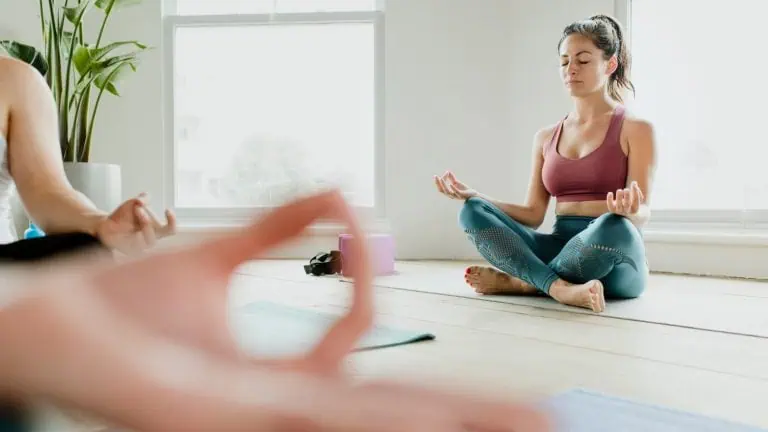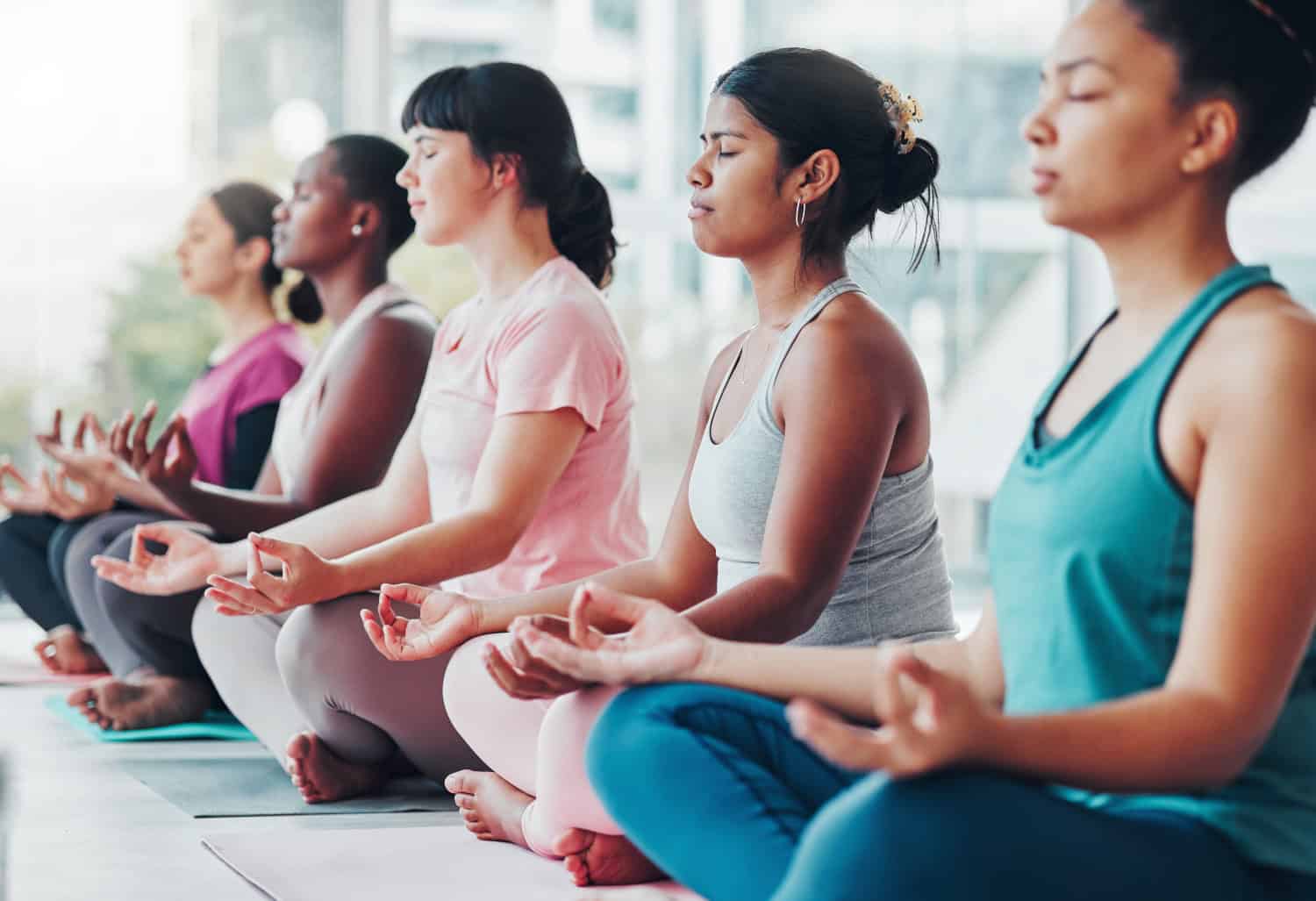
As awareness of the body’s role in recovery increases, so does our understanding of how practices like yoga and breathwork can help heal emotional wounds, even those deeply ingrained in the psyche.
Groundbreaking books such as The Body Keeps the Score by Bessel Van Der Kolk and Gabor Mate’s The Myth of Normal highlight the idea that the body serves as a repository for all our memories and life experiences, both positive and negative.
With these well-proven theories in mind, it becomes clear that excluding the body from emotional recovery is akin to addressing only half the problem. This realization enables us to take a more holistic approach to healing.
Symptoms are often the solution, not the problem
While the mind certainly matters in recovery, housing our thoughts, beliefs, cognitions, and perceptions, trauma experts remind us that the body is also where it’s at.
Among many things, it stores our emotions and keeps a tally of any incomplete stress responses.
We could go as far as to say that individuals grappling with mental health issues like addiction, anxiety, hypervigilance or even shutdown may live in a body that is trying to complete these held responses without knowing it.
In this context, symptoms, however unpleasant, are often the solution, not the problem. However, it doesn’t always feel that way.
They are the body’s way of trying to heal and resolve past traumas, and by understanding this, we can begin to work with our bodies to achieve emotional healing.
We’re here to help.
Contact us today for a no-obligation conversation with one of our professionals.
Why yoga and breathwork are vital in emotional recovery

Somatic practices, such as yoga and breathwork, help us gently and safely connect with our bodies.
When practised correctly, they offer a titrated approach to reconnecting with ourselves and our bodies without becoming overwhelmed, re-traumatized, or stuck in emotional loops.
Individuals grappling with trauma or other mental health issues like anxiety and depression very often feel ‘stuck in their emotions’ or just stuck in general.
It may be helpful to know that overthinking often signifies underfeeling.
Body-based practices, such as breathwork and yoga, can help us gently disentangle from mental loops and reconnect with our bodies, where we can begin to cultivate more self-awareness and work on releasing any stored emotions and unresolved experiences.
Yoga and breathwork support nervous system regulation
Practices like breathwork and yoga can help soothe the nervous system, gently and safely bringing individuals closer to their window of capacity, the optimal zone where people feel more emotionally regulated and generally safer in their bodies.
Trauma and adverse experiences rob us of our internal and external safety.
However, somatic practices like yoga and breathwork gently guide us back into our window of tolerance, where we feel more capable of managing various emotions and experiences without becoming anxious or shutting down.
Yoga
Yoga offers powerful support for mental and emotional well-being by helping individuals reconnect with their bodies, regulate their emotions, and stay grounded in the present moment.
Through regular practice, yoga soothes the nervous system and creates a sense of calm that can significantly reduce symptoms of anxiety, depression, and chronic stress.
Scientific research, including MRI studies, has demonstrated that long-term yoga practice can alter the brain, specifically increasing the volume of the cerebral cortex and hippocampus, areas associated with emotional regulation, memory, and learning.
Specific yoga poses, such as the camel pose, can help release stored tension or trauma in the body.
If you think about the word ‘’emotion’’, meaning energy in motion, yoga helps us move negative energy around the body, allowing it to release in healthy ways.
That’s why many people report feeling lighter after a yoga session, primarily because of the physiological release that comes from practising different yoga positions.
Stress reduction
In addition to releasing tension and trauma from the body, yoga can also help reduce stress, making us feel more relaxed and content, both essential aspects of emotional recovery.
Certain yoga positions can serve as powerful stress-busters, particularly the following:
- Child’s pose
- Cow pose
- Eagle pose
- Dolphin pose
These yoga positions can help alleviate stress by calming the mind, relaxing the body, fostering self-awareness, drawing attention to the breath, and releasing emotional energy.
Breathwork

The benefits of breathwork in emotional recovery are limitless.
First and foremost, breathwork practices like the cannon breath, lion’s breath, or extended inhales allow us to complete specific stress responses connected to a wide range of emotions, including anger, frustration, shutdown, and sadness.
Breathwork practices can help reduce stress and alleviate symptoms linked to mental health disorders like anxiety, depression, and PTSD.
When something traumatic happens or we experience some shock in our lives, we don’t always get the chance to complete the associated stress responses on a physiological level.
For instance, you may suck your breath in when something takes you off guard or breathe shallowly from the chest, which prevents oxygen from moving in and out of your lungs.
These are unconscious breath patterns that can significantly impact an individual’s ability to recover as the emotions and stress responses become stored in the body, resulting in symptoms like anxiety, hypervigilance, and chronic fatigue.
As a society, we haven’t been taught to breathe correctly, yet it seems like such a simple thing to do, breathe, right? How hard can it be?
Many of us engage in unhealthy patterns, albeit unconsciously, such as holding our breath or breathing only from the chest, rather than using the diaphragm.
How breathwork supports addiction recovery
Breathwork is a powerful and accessible tool that supports addiction recovery by helping individuals reduce stress, manage emotions, and improve overall mental well-being.
Through intentional breathing practices, individuals in recovery can develop a greater sense of control over their emotional responses and create a deeper connection between the mind and body.
Techniques such as box breathing, alternate nostril breathing, and the 4-7-8 method stimulate the body’s parasympathetic nervous system, responsible for rest, relaxation, and recovery.
This physiological shift promotes calmness, steadier moods, and improved focus, all of which are critical during the early and ongoing stages of healing.
Consistent breathwork practice has also been shown to enhance sleep quality, improve mood, and increase heart rate variability – a key indicator of emotional resilience and stress adaptability.
One of breathwork’s most significant advantages is its simplicity: it requires no equipment, no cost, and can be practised virtually anywhere.
When integrated into a broader recovery plan, breathwork becomes a valuable, daily tool for grounding, emotional regulation, and reducing the risk of relapse.
Why these practices matter in emotional recovery

If we adopt the theory that the body is the memory, then we must consider the integral role it plays in recovery and incorporate somatic-based practices into individual treatment programs.
Evidence-based treatments, such as talk therapy, have their uses in the recovery process.
These approaches can help us make sense of our past, identify and change unhelpful thought and behaviour patterns, and challenge any negative beliefs we may have about ourselves and the world.
These therapies tend to focus on the left brain, or the thinking brain, which, again, is a vital part of healing and highly effective in achieving sustained recovery outcomes.
However, for a well-rounded treatment experience, we must also consider the body.
Most mental health and addiction rehab centres include body-based therapies like yoga and breathwork as part of an integrated treatment program, and for a good reason.
Together, they work exceptionally well, offering individuals the opportunity not only to manage their mental health symptoms but also to reconnect with their bodies and develop greater internal safety where it may have been lost.
Additionally, unlike other treatment modalities, breathwork and yoga are transportable, allowing you to practise them anytime, anywhere, as long as it’s safe to do so, which makes them highly accessible tools for those in recovery.
Through these practices, you can learn to reconnect with your body, especially whenever you feel your thoughts escalating out of control, or when you sense yourself becoming stuck in mental loops.
The body is information in motion
The body gives us information that the mind cannot.
For instance, you may think you feel anxious or regretful. However, through somatic practice, you may find that these are protective emotions guarding you against more difficult feelings, such as sadness or disgust.
The body unravels information that our thoughts cannot always comprehend.
All we have to do is tune in and listen.
Recovery begins with stillness
Many addiction treatment centres in Canada, especially those with a holistic focus, incorporate mind-body therapies as part of a comprehensive recovery plan.
These approaches aim to treat the whole person, not just the symptoms of a mental health issue.
As you explore potential treatment options, it’s important to ask thoughtful questions to ensure the program aligns with your needs:
- Do they offer a range of therapeutic modalities, including evidence-based and complementary approaches?
- Are trauma-informed practices included in the care model?
- Is there room for mindfulness, movement, or body-based healing techniques?
Remember, recovery isn’t about perfection; it’s about connection, curiosity, and creating space for change.
Next steps
At Centres for Health and Healing, we provide a range of holistic and experiential approaches as part of an integrated treatment program, including yoga and breathwork.
Our multidisciplinary team is comprised of compassionate, experienced professionals who understand the value of integrated, personalized treatment models for individuals in recovery.
We provide a safe and nurturing environment that focuses on the mind, body, and spirit, allowing you to reconnect with yourself in a way that feels aligned and empowering, focusing on your needs and your unique vision for future wellness.
To learn how we can help guide you toward lasting recovery and emotional well-being, please get in touch with our professional team in Ontario, Canada, today.
We are here and ready to support you as you navigate your unique path to reconnection, restoration, and lasting wellness.
A gift you owe to yourself.





